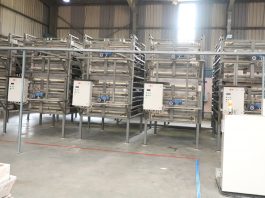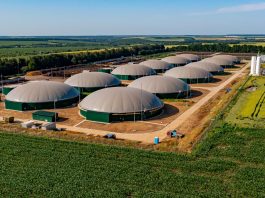Researchers from the University of Gothenburg have analysed the ability of trees to improve air quality and identified which species are best at absorbing air pollutants.
Trees and other greenery in urban areas are important for the well-being of residents. Leaves and needles on trees have the ability to purify the air from pollutants, improving air quality and reducing exposure to hazardous substances in the air. Generally, conifers are better than broadleaved trees at purifying air from pollutants, but deciduous trees may be better at capturing particle-bound pollution.
To find out which trees are best for improving air quality, researchers from the University of Gothenburg collected leaves and needles from 11 different trees growing in the same place in the Gothenburg Botanical Garden’s arboretum. The team analysed which substances they captured and concluded that air purification depended on the type of pollutant involved.
“This tree collection provides a unique opportunity to test many different tree species with similar environmental conditions and exposure to air pollutants,” said Jenny Klingberg, a researcher at the Gothenburg Botanical Garden.
The work, ‘Differences in accumulation of polycyclic aromatic compounds (PACs) among eleven broadleaved and conifer tree species,’ is published in Ecological Indicators.
The importance of improving air quality in urban areas
Cities often have very poor air quality due to rapidly increasing urbanisation. Over the last decade, many cities have seen continuously high and rising levels of air pollution. The majority of air pollutants are emitted via human activities, such as burning fossil fuels and vehicle exhaust fumes.
Improving air quality is vital, as it has been proven that exposure to air pollutants can reduce quality of life and life expectancy. Regarded as the largest single environmental health risk, air pollution worsens breathing conditions, and can even lead to serious conditions such as cardiovascular diseases.
A total of 32 different pollutants were analysed
The researchers analysed 32 different pollutants, some of which are bound to particles of various sizes, and others that are gaseous. The project focused on polycyclic aromatic hydrocarbons (PAHs) which, in cities, are mainly released due to incomplete combustion in engines.

“Our analyses show that different tree species have different abilities to absorb air pollutants. Conifers generally absorbed more gaseous PAHs than broadleaved trees. Another advantage of conifers is that they also act as air purifiers in winter, when air pollution is usually at its highest,” said Klingberg.
Different types of trees varied in air cleaning ability
The researchers found that needles were able to improve long-term air quality by absorbing air pollutants for several years, something which leaves cannot do. However, broadleaved trees were more efficient at cleaning the air of particles due to their leaves having a larger surface area to which particles can attach.
“The various species differed more than we expected. Larch, which is a conifer that sheds its needles each autumn, was best in the test. Larch trees absorbed the most particle-bound pollutants, but were also good at capturing gaseous PAHs,” said Klingberg.
However, needles and leaves do not break down pollutants to any greater extent, even if sunlight can start that process. There is therefore a risk that the soil beneath the trees will be contaminated by pollutants when the leaves and needles shed and decompose. This places the ecosystem in the soil at risk of being affected, though this has not been investigated in the current study.
“The pollutants do not appear to impact the trees’ photosynthesis; leaf chlorophyll content is just as high in the most polluted areas of Gothenburg compared with trees that grow in less polluted environments. But this likely looks different in cities with even worse air quality,” said project leader Håkan Pleijel, professor of applied environmental science at the University of Gothenburg.
Careful urban planning is necessary
Several factors determine the benefits of trees for improving the air quality of city residents. An alley of trees in a narrow street canyon, for example, can reduce airflow, negatively affecting the dispersion and dilution of the air pollutants and therefore increasing concentrations of contaminants locally on busy streets. Thus, on narrow streets sheltered from the wind, lower-growing vegetation, like hedges, may be preferable.
Combining different tree species to optimise air purification is necessary, and urban planners must take into account other functions and benefits of trees.
“This study contributes to improving our understanding of the ability of trees to clean the air and which species are best at absorbing air pollutants,” said Pleijel. The research is important for designing sustainable cities.
Although trees can increase the air quality in cities, reducing emissions is still the most important measure.





